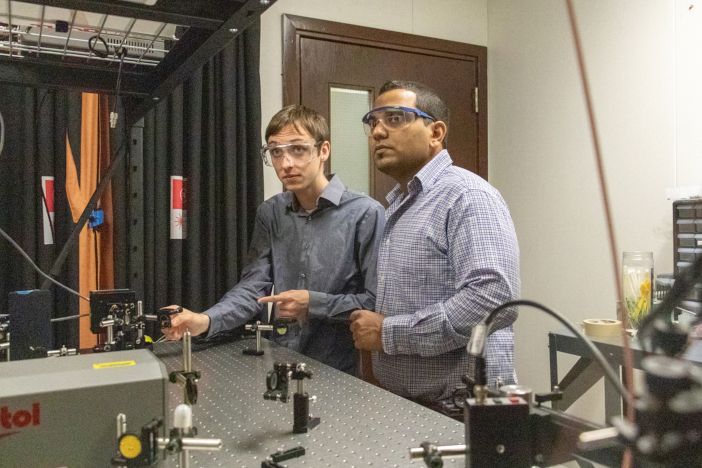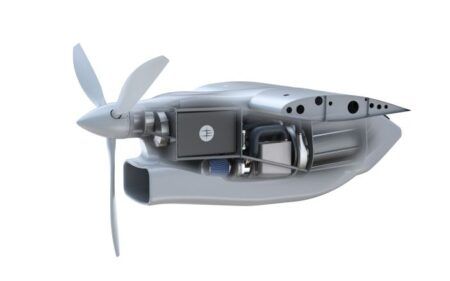Researchers in the USA have developed a technique that can measure the temperature and characterize the molecules in a fire or explosion with a single laser scan.
The process, which has been developed at the University of Central Florida (UCF), uses an acousto-optically modulated quantum cascade laser. Previous techniques have required multiple lasers to characterize the extreme environment of a fire or explosion.
The technique’s use could help engineers gain new and more detailed insights to improve existing models of combustion reactions, leading to significant improvements in jet engine design and the way aerospace components and equipment is tested.
The technique works by shooting a laser through a fire or explosion and catching on the other side using a detector. As the laser passes through a combustion reaction it loses some of its power and encounters different molecules involved in the combustion, such as carbon monoxide.
By measuring the level of the power decrease, the researchers found they could calculate temperature as well as concentrations of different molecules.
The technology scans the combustion and characterizes the changing temperature and molecular distribution of the environment within microseconds, doing the work of multiple lasers in a fraction of the time, said the researchers.
Subith Vasu, associate professor at UCF’s department of Mechanical and Aerospace Engineering and Center for Advanced Turbomachinery and Energy Research said,
“You have this high temperature, noncompromising environment – to know what is going on inside you can’t send like a probe into it because it will just melt. So, you have to come up with ways to look inside and measure, for example, the temperature and the exact concentration of molecules burning.”
The researchers developed and tested their technique using a shock tube that uses small amounts of fuel to produce micro-explosions.
Lead researcher Zachary Loparo, said, “I’m really pleased with the results. We did a lot of modeling beforehand to predict what we should see, and it matched pretty well with what those models said. The results were very good.”
The laser used in the research was designed by Arkadiy Lyakh, a co-author of the study who is an assistant professor in UCF’s College of Sciences and is also part of UCF’s NanoScience Technology Center.
The findings have been published in the journal Optics Letters.





